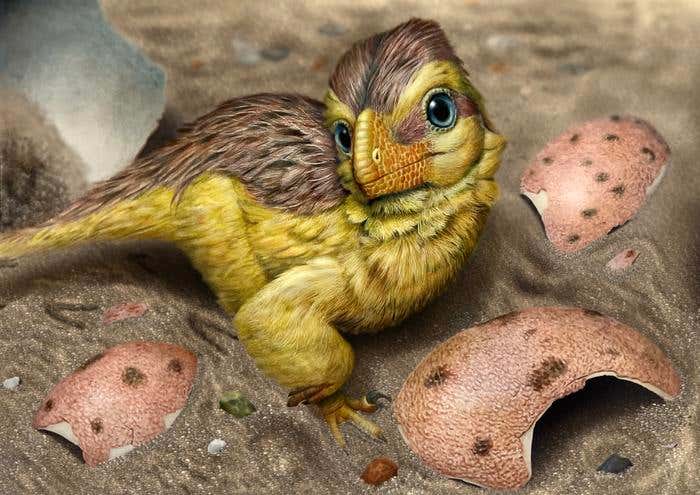4,000-year-old skeletons reveal surprising origin of leprosy
DNA from 4,000-year-old skeletons in Chile reveals that a rare form of leprosy existed in the Americas long before European contact.

Leprosy of feet. (CREDIT: UCL)
In the dry, windswept valleys of Northern Chile, two ancient skeletons are changing how scientists understand the history of a disease that has long carried both medical and cultural weight. Their bones, buried for 4,000 years, held something unexpected: the preserved genetic fingerprints of Mycobacterium lepromatosis, one of the two bacteria known to cause Hansen’s disease, or leprosy.
Hansen’s disease today is rare and treatable, but its past was anything but simple. The discovery of this ancient strain of M. lepromatosis opens an entirely new chapter in the disease’s story. Previously believed to have arrived in the Americas during European colonization, leprosy may have been part of the continent’s history far earlier than anyone imagined.
This new evidence pushes the known presence of M. lepromatosis in the Americas back thousands of years and suggests a separate, long-standing evolutionary path for this form of the disease—one distinct from its better-known cousin, Mycobacterium leprae, which likely evolved in Eurasia.
An Ancient Disease with Two Separate Paths
For decades, scientists have studied M. leprae, the dominant leprosy bacterium, and traced its roots to Eurasia, where it likely emerged around 7,000 years ago during the Neolithic transition. This period also saw the rise of other major infectious diseases like plague, tuberculosis, and typhoid fever. M. leprae eventually spread into Europe, Asia, and Oceania, where its skeletal markers—like bone deformation—are found in remains dating back 5,000 years.
By contrast, M. lepromatosis was only recently identified and has remained a mystery. It causes more severe forms of Hansen’s disease, including diffuse lepromatous leprosy and the life-threatening Lucio’s phenomenon. Unlike M. leprae, which is widespread in historical records and archaeological samples, M. lepromatosis had never been recovered from ancient remains—until now.
Related Stories
A research team led by Kirsten Bos at the Max Planck Institute for Evolutionary Anthropology, working with scientists from Argentina and Chile, found the bacterium’s DNA in two well-preserved adult male skeletons from the archaeological sites of El Cerrito and La Herradura in Chile. Their discovery marks the first time a full ancient genome of M. lepromatosis has been reconstructed and analyzed.
“These ancient DNA findings are reshaping what we thought we knew,” says Bos, who leads the institute’s Molecular Paleopathology group. “The advanced techniques now used to study ancient pathogen DNA allow us to look beyond the suspects and into other diseases that might not be expected from the context.”
Digging Into the Ancient DNA
The process of identifying ancient pathogens is not easy. DNA degrades over time, especially in dry or humid environments. But the preservation in these skeletons was described as “amazing” by Lesley Sitter, a postdoctoral researcher on Bos’s team who led the genomic analysis. That rare level of preservation allowed scientists to reconstruct the genome of M. lepromatosis and compare it to modern forms.
Doctoral candidate Darío Ramirez of the University of Córdoba in Argentina was the first to detect genetic traces of leprosy in the bones. “We were initially suspicious, since leprosy is regarded a colonial-era disease,” he explains. But further analysis confirmed that the DNA was not from M. leprae, but from M. lepromatosis—a revelation that turned a common assumption on its head.
The team’s work shows that the M. lepromatosis lineage has likely been present in the Americas for millennia, evolving separately from its Eurasian counterpart. “This provided the first clue that M. lepromatosis and M. leprae, though nominally both pathogens that cause Hansen’s Disease, might have very different histories,” says Ramirez.
Disease in the Pre-Contact Americas
For nearly 20,000 years, diverse human communities lived across the Americas before European contact. These societies adapted to a wide range of climates and environments, which would have influenced how diseases developed and spread. Yet much of that disease history has been lost or overwritten by the influx of new pathogens brought by European colonists. Diseases like smallpox and measles devastated Indigenous populations and made it harder to understand what infections may have existed earlier.
Archaeological studies have revealed that pre-contact life was not disease-free. Skeletal remains sometimes show signs of long-term illness, but without specific DNA evidence, it’s hard to assign these symptoms to known diseases. The discovery of ancient M. lepromatosis helps fill in this gap and shows that leprosy—or at least one of its bacterial forms—was already present in South America long before European arrival.
Rodrigo Nores, an anthropology professor at the University of Córdoba, believes this is just the beginning. “This disease was present in Chile as early as 4000 years ago, and now that we know it was there, we can specifically look for it in other contexts,” he says. Finding more cases, both ancient and modern, will help scientists understand the pathogen’s spread and impact over time.
What This Means for Leprosy Research
Hansen’s disease still exists in over 100 countries, but it is now curable with antibiotics. Access to treatment, however, varies widely by region, and the illness remains burdened by stigma. Learning more about its history could help reduce that stigma and improve awareness.
M. lepromatosis, one of two bacteria that cause the disease, has been detected in very few people. It was recently found in wild squirrels in the UK and Ireland, raising questions about animal reservoirs. In the Americas, no animal hosts have yet been identified—unlike M. leprae, which infects armadillos.
“Whether M. lepromatosis originated in the Americas or came with the first settlers from Eurasia remains to be determined,” says Kirsten Bos. While current evidence suggests an American origin, more genome data is needed to be sure.
This research shows how little is known about ancient diseases and how much genomic science can reveal. “Ancient DNA has become a great tool that allows us to dig deeper into diseases that have had a long history in the Americas,” Bos adds. As more ancient remains are studied, scientists expect to uncover more about M. lepromatosis—its origin, spread, and the people it once affected.
Research findings are available online in the journal Nature Ecology & Evolution.
Note: The article above provided above by The Brighter Side of News.
Like these kind of feel good stories? Get The Brighter Side of News' newsletter.



